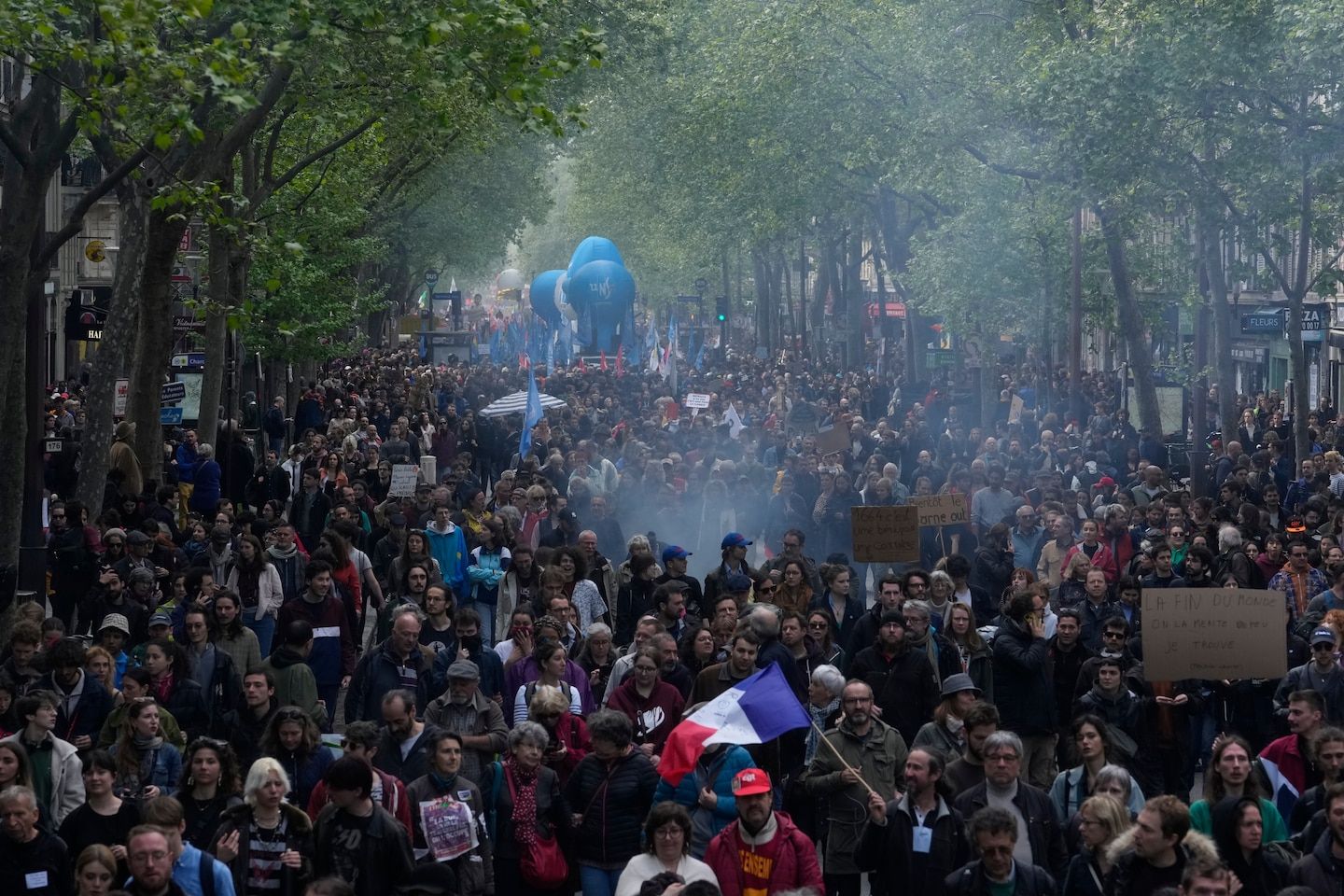French protest Macron retirement law on May Day
Listen 3 min Comment on this story Comment Gift Article Share
France’s traditional May Day parade celebrating workers’ rights and achievements was expected to draw even larger crowds than usual this year against the backdrop of fierce public rejection of a law increasing the retirement age. Are you on Telegram? Subscribe to our channel for the latest updates on Russia’s war in Ukraine. ArrowRight In a festive atmosphere — and plenty of rain in Paris — hundreds of thousands, including children, marched throughout France on Monday under the watchful eye of thousands of police officers and many law enforcement drones, despite efforts to ban their use. In the capital alone, there were 5,000 police officers deployed.
Fearing a loss in the lower house of Parliament, where he no longer has a majority, President Emmanuel Macron passed the landmark legislation raising the retirement age from 62 to 64 using a constitutional maneuver that enraged unions.
With the unions united for the May Day protest — for only the third time since 1945 — the turnout was expected to be large. The last time they united, in 2009, there were 1.2 million protesters nationwide. Nearly 300 rallies were to be held across the country with the main focus in Paris.
Since the pension measure was presented, there have been 12 days of protests and strikes across France, with violence often breaking out after sunset in the heart of many cities, including Paris, where demonstrators burned dumpsters holding trash that had piled up for days after a strike by garbage collectors.
Advertisement
A rundown of police and union estimates for turnout in various cities across the country indicate more people than last year. Authorities estimated around 100,000 in Paris, though organizers typically put the number much higher.
With the Constitutional Court approving the law in mid-April, there is little the protesters can do, however, to stop its implementation. Macron’s lack of a parliamentary majority and his recourse to administrative means to pass laws has angered citizens who see his approach as anti-democratic.
While the government has invited the unions to negotiate over further changes to social benefits that Macron has planned, so far they have refused.
Although the vast majority of demonstrators have been peaceful, authorities on Monday feared the presence of 1,000 to 2,000 aggressive protesters in Paris alone. Before the march, police in Paris set up checkpoints and released photos of weapons they had confiscated from marchers, including knives and fireworks.
Ahead of the trade union march, police said they were forced to intervene against a “pre-procession” to separate out a group committing numerous violations.
Advertisement
By 4 p.m., police in Paris said they had arrested 40 people.
In the run-up to Monday’s demonstration, several rights groups had accused the police of excessive use of force and disproportionate use of tear gas in previous demonstrations, especially the BRAV-M anti-riot unit.
Several regions authorized the use of drones by law enforcement agencies to monitor the May Day parades, including Paris, Lyon, Bordeaux, Nantes, Le Havre and Tours, despite efforts to fight the measures in court.
“Given the damage, clashes with internal security forces and sabotage of video protection cameras found during some recent national days of inter-union protest, the prefect of the Gironde decided to strengthen the security of the course to ensure the best possible conduct of this important demonstration,” the prefecture said in a statement.
Before the start of the main marches Monday, there were reports of violence in Lyon with protesters damaging property and police firing tear gas. In Paris, members of the Extinction Rebellion group threw paint on the Louis Vuitton Foundation building.
Beatriz Rios in Brussels contributed to this report.
GiftOutline Gift Article
Source: The Washington Post


